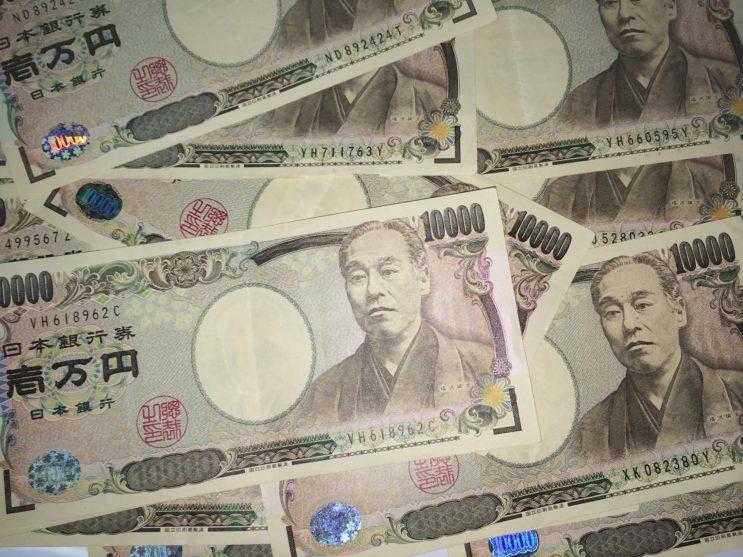
The USD/JPY is at January high at 104.68 on Friday, after bouncing from the monthly low at 102.60, as economic data pours in to improve market sentiment.
Covid vaccination and stimulus measures have uplifted the Japanese economy, though the pandemic continues to hinder faster growth.
USD/JPY Bounces to January Highs from 102.60 Lows
USD/JPY rises for the third consecutive day. As long as the USD/JPY stands above the 104 level, the currency pair remains bullish.
USD/JPY shows a strong upmove from 103.50 to 104.95 for the past three days but did not reach the 105 marks. After moving past the 104.25 resistance level, the USD/JPY pair saw a sharp rise.
The support at 103.50 has been supportive to the US dollar to the Japanese yen currency pair. The greenback to the Japanese Yen moved lower to 102.50 levels in the first week of January, which it reached earlier in 2016. However, it is currently moving upwards.
Coronavirus Vaccination Process in Japan
The vaccination process is helping people in Japan battle the coronavirus, but the immunization process is slow. Though coronavirus infections are decreasing, pandemic effect remains.
Covid vaccinations are proceeding across the globe, but Covid cases are increasing too in countries like the US, UK, and Japan.
Unemployment Rate Lowest in Many years
The Unemployment Rate in Japan saw the steepest fall in 45 years. and has gone down for the first time in 11 years. The Ministry of Health, Labour, and Welfare in Japan reports that the job availability ratio has come down due to disruptions caused by the coronavirus pandemic. The unemployment rate is at 2.9% in December, unchanged from the previous month’s reading. Job-to Applicant ratio is at 1.06.
Japan’s Monetary Easing to Continue
Bank of Japan’s monetary easing is expected to continue. The BOJ’s yield curve control policy helps to keep interest rates lower at -0.1% rates. BOJ Governor Haruhiko Kuroda says that the current monetary easing policy will continue with a few adjustments. The government has stepped up its purchase of government bonds and investments, which has improved the country’s financial situation.
The lending interest rate in the Bank of Japan is negative, with rates below zero to stimulate the economy. Experts, however, criticize the policy of negative interest rates as it hurts the profitability of banks.
Economic Data In Japan Shows Recovery
The Leading Economic Index in Japan has increased to 96.4 in November 2020. Earlier it was 94.3 in October. The economic indicators show that the country is recovering from the Covid pandemic, with consumer sentiment improving with job offers.
The Current Account surplus has gone up to 1874 billion yen in November 2020, compared to last year’s surplus at 1456 billion yen. Primary income and secondary income gap have widened along with goods and services account.
Economy Watchers Survey has declined from 45.60 in November 2020 to 35.50 in December. The current mood of businesses is more pessimistic as it has declined even lower. Barbers, waiters, and taxi drivers have been the worst affected by the pandemic as they are involved in direct service with consumers.
Real GDP growth has grown at 4% in the fourth quarter. The slowing growth implies that the first quarter in 2021 may also be slow.
Producer Price Index shows improvement from -2.3% to -2.0%, year-on-year. The Corporate Goods Price Index, which measures the change in Japan’s rate of inflation, moves along with the consumer price inflation, keeps the Japanese Yen bullish.
Machinery Orders in Japan, showing growth in November 2020 at 1.5% month-on-month, is above the expected 6.2% drop. It surged 17.1% the previous month. Non-manufacturing orders have improved 5.6%, but manufacturing orders have come down 2.4%.
With coronavirus infection reducing gatherings, the Japanese Economy Minister Yasutoshi Nishimura says, “Employment conditions show an overall weak condition in Japan”.
US Treasury Yields Advance
10-year US yield saw a sharp increase above 1% level, moving to 1.07%. The USD/JPY currency pair is highly correlated to the US yield. The long-term US Treasury yields have rallied with the large US fiscal stimulus brought by the Biden administration.
The US Dollar Index (DXY) tested the area at 90.85 but came under heavy selling pressure. Though the US 10-year yield is back at the 1.07 region, the US dollar has not reacted much. The stance of the Federal Reserve towards the policy of “lower for longer” is not helping the US currency. The 91.00 level will be strong resistance for the greenback to resume its strong trend.
GBP/JPY
The British pound has broken higher against the Japanese Yen last week, ending 29th Jan 2021. The next barrier is at ¥145 level, which is also its psychological resistance figure. With much optimism in the economy after the covid vaccine rollout, the GBP/JPY is expected to move forward. Bank of England has dropped talks on negative interest rates, and this is good for the economy.
EUR/JPY
The EUR/JPY has rebounded from the March 2020 lows at 114.00 levels and has headed towards the 127.50 level. Once it breaches this level, the EUR/JPY will continue its upward trend. The euro to Japanese yen touched the bottom level at 122.00 levels in December, and this will be the supporting level for the EUR/JPY pair.